
The other day, my sweetie came out to the garden to find me buried head first in our Amish Paste tomatoes, hacking away and cursing.
He had to duck as green branches flew at him from within the tangled mess of tomatoes.
It’s the third time this summer that I have had to reclaim my tulsi basil, the cucumbers and the feverfew from these tomatoes.
And we haven’t even eaten a single tomato yet.
I stood up, looking very much the mad scientist; white linen shirt rumpled and clinging to my sweaty frame, hair sticking out at all angles, and with a crazed look in my eye, I said,
“That’s it! From now on, we’re growing determinate tomatoes!”
He looked at me and said, “We’re growing what?”
Determinate tomatoes.
If you’re new to gardening, this distinction might be unfamiliar to you, but there are two classes of tomatoes – determinate and indeterminate. (Don’t worry, plenty of seasoned gardeners don’t know the difference.) And after careful consideration (and picking tomato leaves out of my hair), I can think of some pretty great reasons to grow only determinate tomatoes.
Determinate vs. Indeterminate – What’s the Difference?
Before I make my case, it would be helpful to talk about the difference between determinate and indeterminate tomatoes.
Determinate Tomatoes
Determinate tomatoes are tomatoes that are more bush-like in their growth habits, hence their nickname of bush tomatoes. They will reach a certain height and stop growing. And they tend to be more compact and shorter than their vining cousins.
Determinate varieties set fruit simultaneously, giving you one large harvest of tomatoes. Once the plant has finished putting out fruit, it will slowly begin to die back.
Indeterminate Tomatoes
Indeterminate tomatoes are also known as vining tomatoes and hold onto their wild beginnings as a nightshade creeping across the Andes mountains. They don’t have a set height, and the plant will continue to grow throughout the season, producing new branches until it’s eventually killed by frost.
Smaller sets of fruit grow and ripen continuously throughout the season, starting at the base. As the plant grows, it will keep putting out new flowers, again only stopping when the plant dies in the first frost.
You know, now that I think about it, I’ll bet the tomatoes in Attack of the Killer Tomatoes were an indeterminate variety. Zombie tomatoes, only stopped by frost.
How Can I Tell Which One I’m Growing?
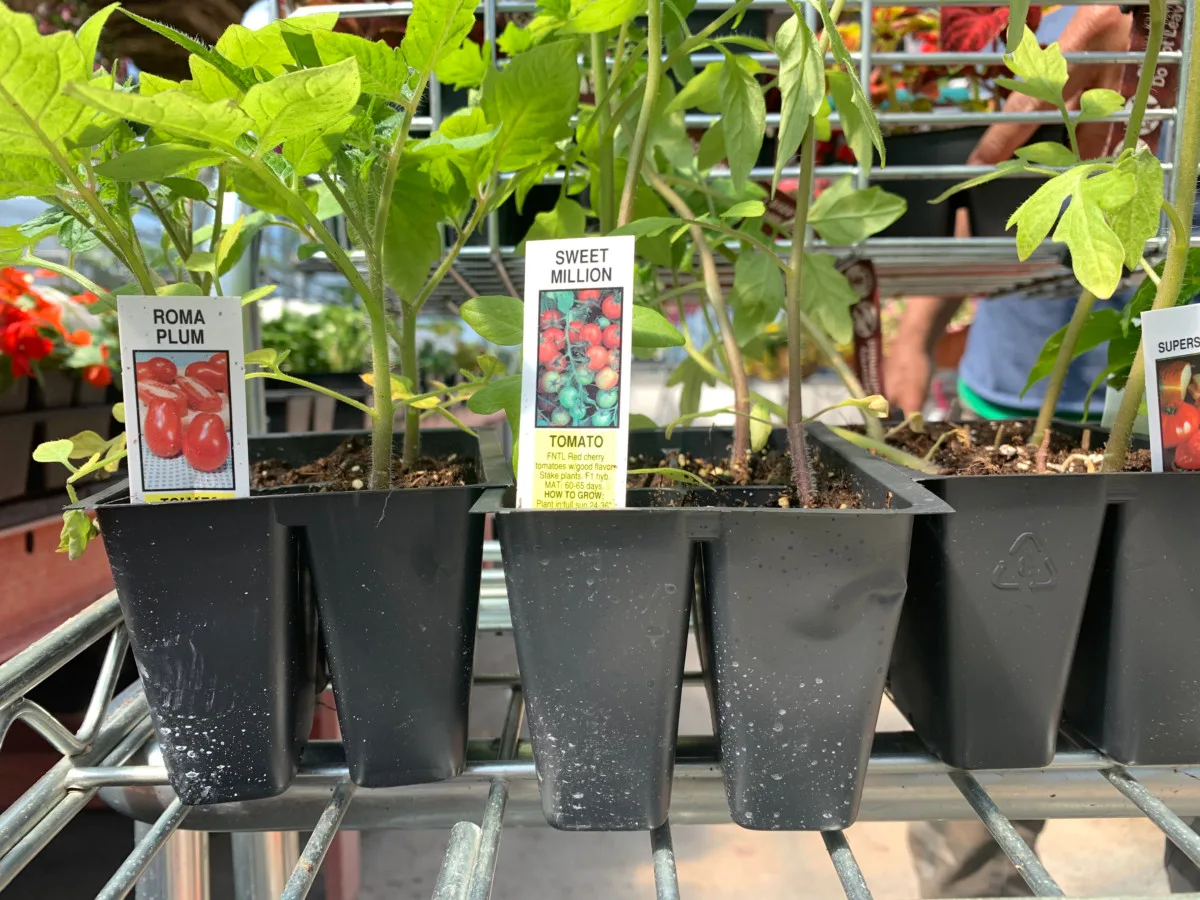
Don’t know which kind of tomato you’ve got in the garden? There are a few easy ways to check.
You can look at the seed packet or look up the variety on any number of seed websites. But one of the easiest ways to tell if your tomatoes are determinate or indeterminate is to look at the flowers or tomatoes.
Determinate varieties will only produce tomatoes at the ends of the branches, while indeterminate varieties will put out fruit all along the stems.
Also, if you’ve had to prune them several times because you’ve lost a pet, car or family member in the encroaching mass of tomatoes, you’re most likely growing indeterminate tomatoes.
So, what makes determinate tomatoes so great? Well, for starters…
1. Great for Short Growing Seasons
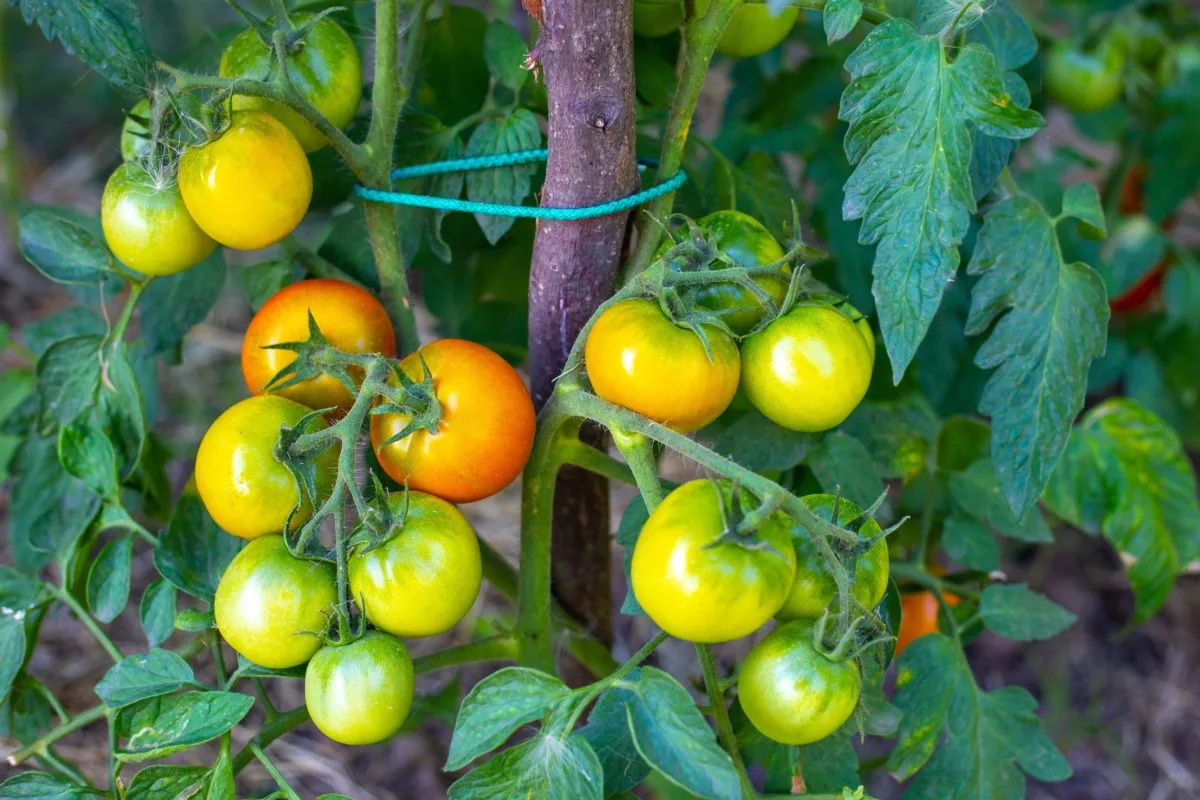
Determinate tomatoes are great for folks who live in areas with a short growing season. Many of the tomato varieties I suggest for short-season growing are determinate. When time is of the essence, you can’t wait for a sprawling plant that will put more energy into increasing its territory rather than putting out fruit.
Determinate tomatoes stop growing once they begin setting fruit, and most do so earlier than their indeterminate cousins. This means you get a nice harvest of tomatoes all at once before your season is over.
2. Not Too Shady
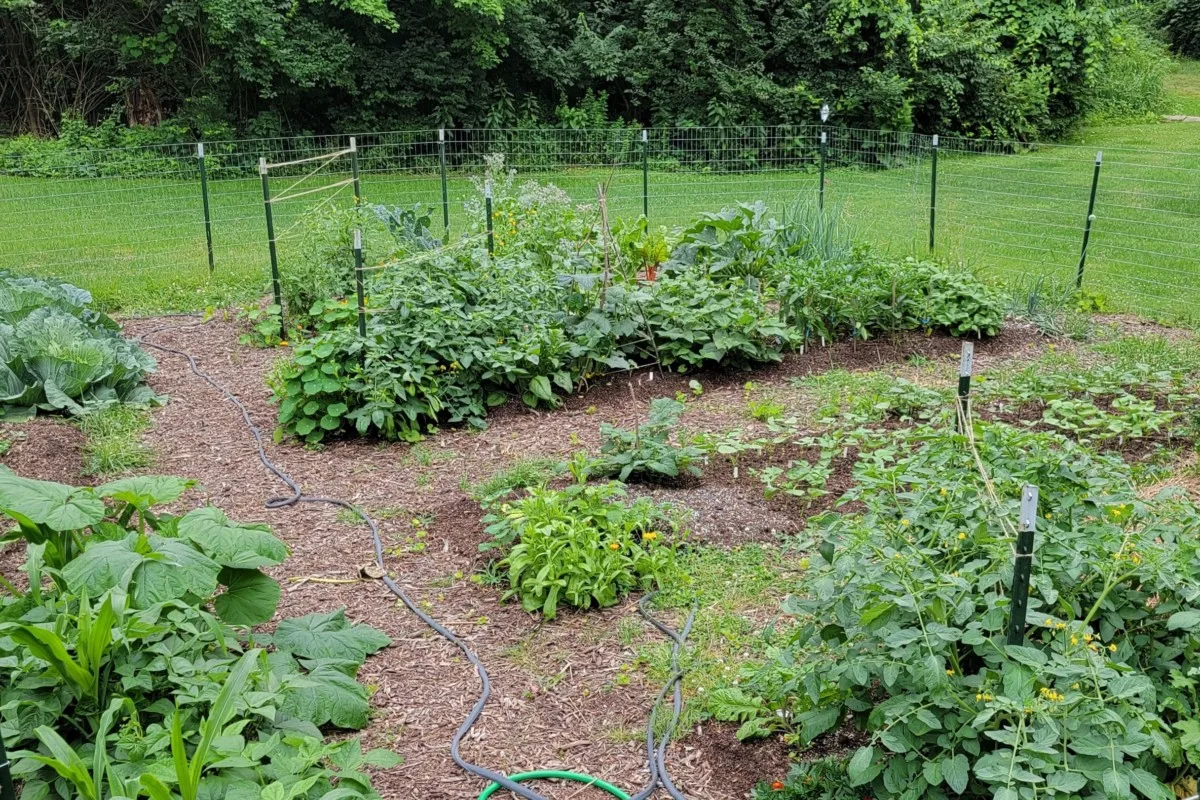
It’s tricky finding a spot in the garden to grow tomatoes because of their size. Their height can end up shading out other plants growing near them. When you have an indeterminate variety, this is especially true. Unless you stay on top of pruning them, they will keep getting taller.
Most determinate varieties top out between two and four feet tall, making them the ideal tomato if you’re concerned about shade. Because of this, they can go anywhere in the garden without casting much of a shadow on their neighbors.
3. Complicated Staking is Unnecessary
Staking indeterminate tomatoes is rarely a one-and-done deal. You start the season with one of those nice vinyl-coated tomato cages, and by early June, it’s nowhere to be found. The tomato has absorbed it and kept right on growing, its many arms reaching out of its metal corset, bent on whole-garden domination.
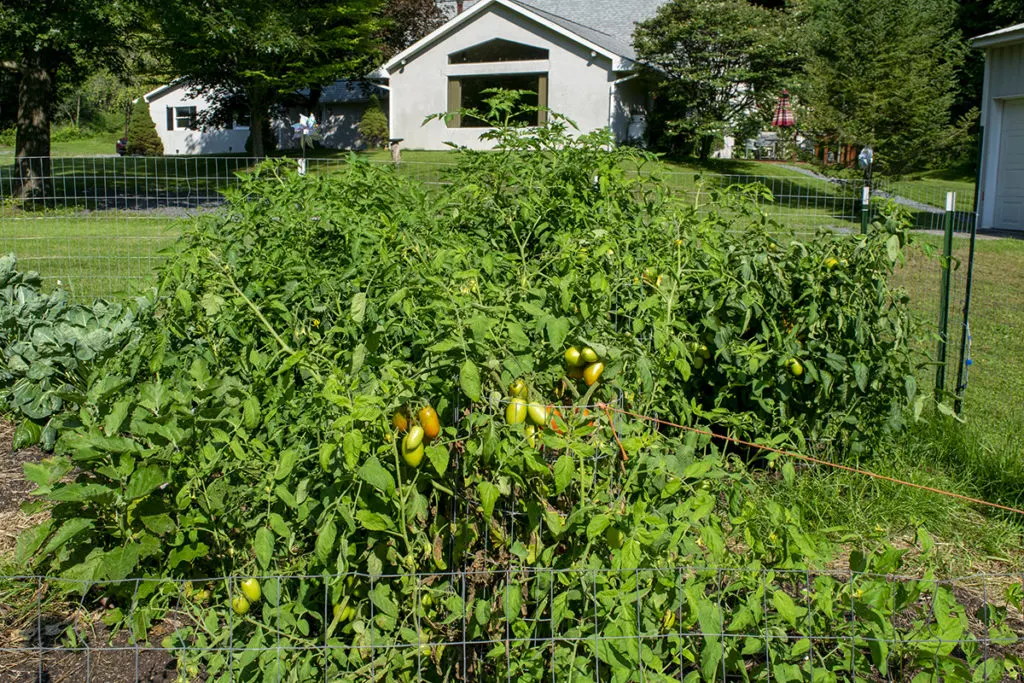
Even another method, such as the Florida weave, constantly finds you tucking stray stems back within the twine, or worse, snapping them off while trying to tuck them back into the twine.
Eventually, you give up trying to contain it and start hacking off its limbs, which becomes a weekly job.
Of course, that isn’t to say that determinate tomatoes don’t require some sort of support, but rather that once you’ve staked them, they’re good to go for the rest of the season. They’re quite content to hang out in their tomato cages.
4. Got a Small Garden?
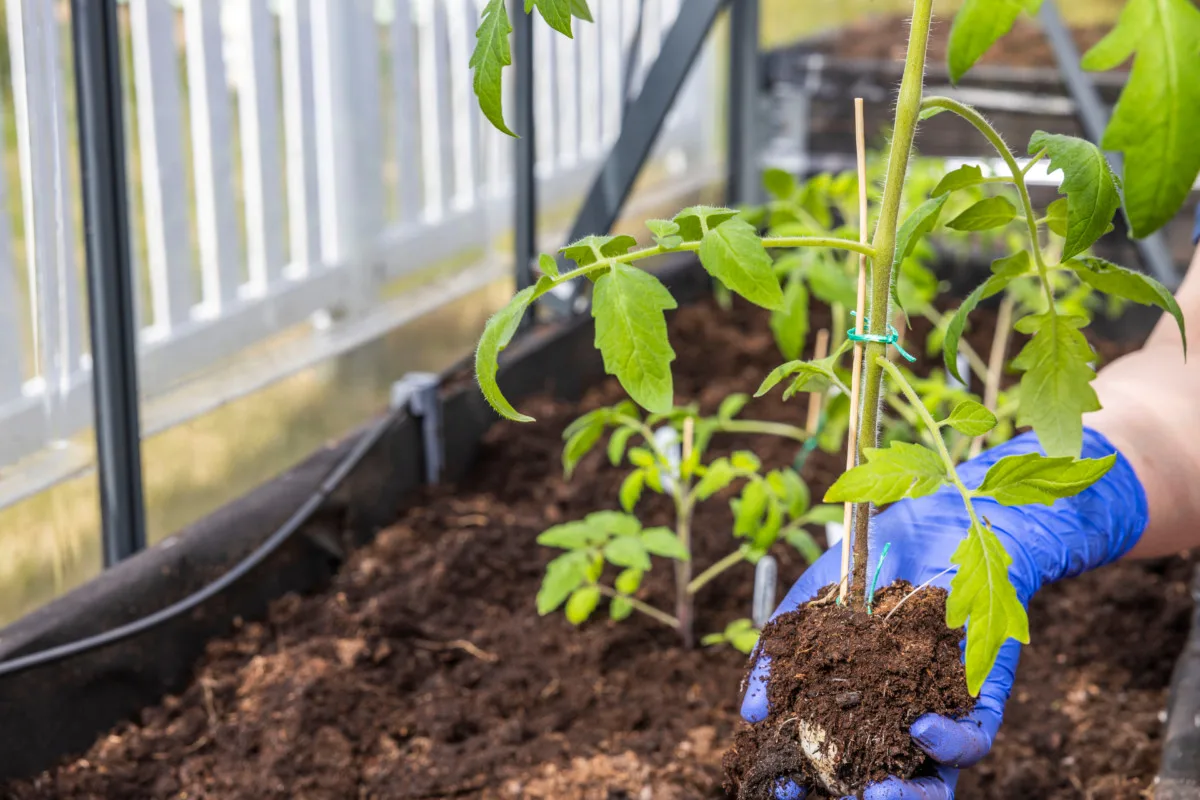
If space is an issue, it makes sense to grow determinate tomatoes. Raised beds are wildly popular, and for good reasons. They look nice in your yard, you control the soil quality and nutrients, and they’re much easier to work in if they’re taller.
I have said in the past that if you have raised beds, you should save them for something other than tomatoes. But if you’re bound and determined to have tomatoes in your raised beds or small vegetable patch, then determinate tomatoes are your best option as they’re more compact and won’t sprawl.
5. Perfect for Canning
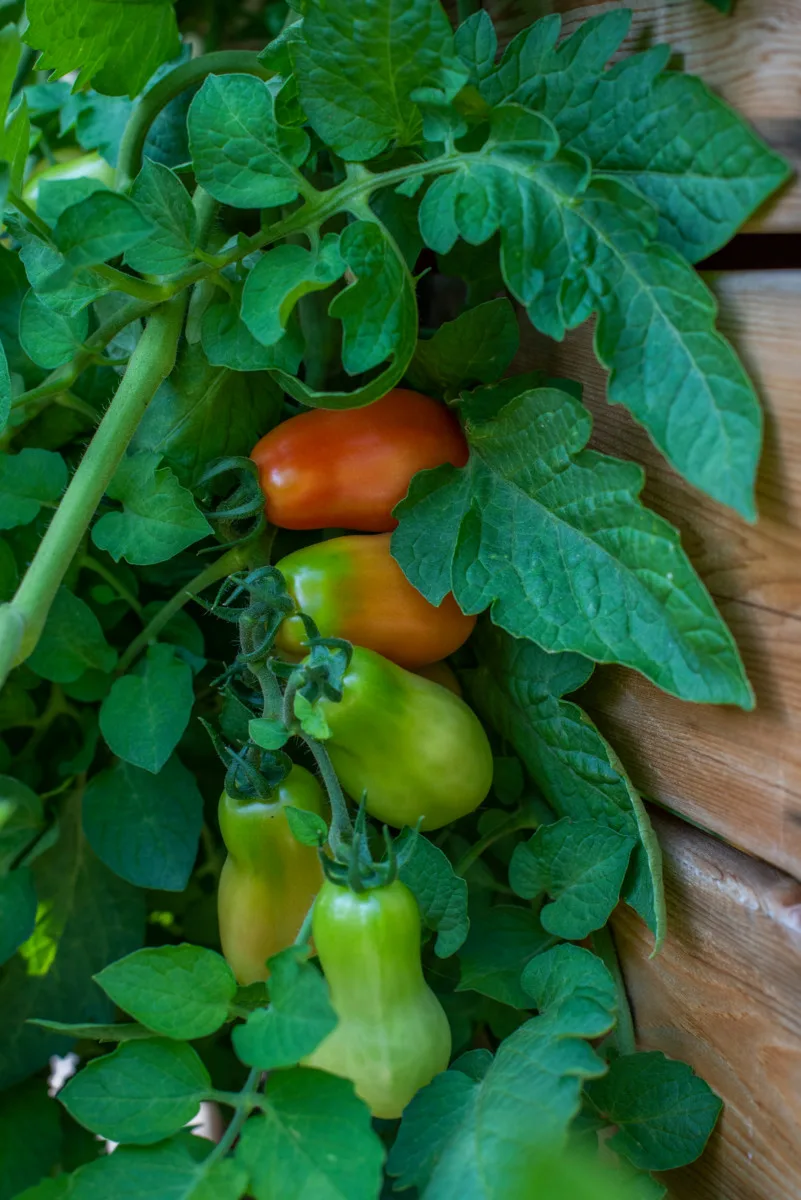
What if your goal in growing tomatoes is to can jar after jar of fresh tomato juice or homemade salsa?
Determinate tomatoes are the home canner’s best friend as they set their fruit so it ripens all at once. This provides you with a harvest of tomatoes that gives you plenty of fruit to work with. Indeterminate varieties will provide you with fruit all summer long, but it will be a few fruits here and a few fruits there.
If you’ve got a pantry to fill, you’ll want to choose a determinate tomato variety.
6. The Perfect Patio or Balcony Tomato
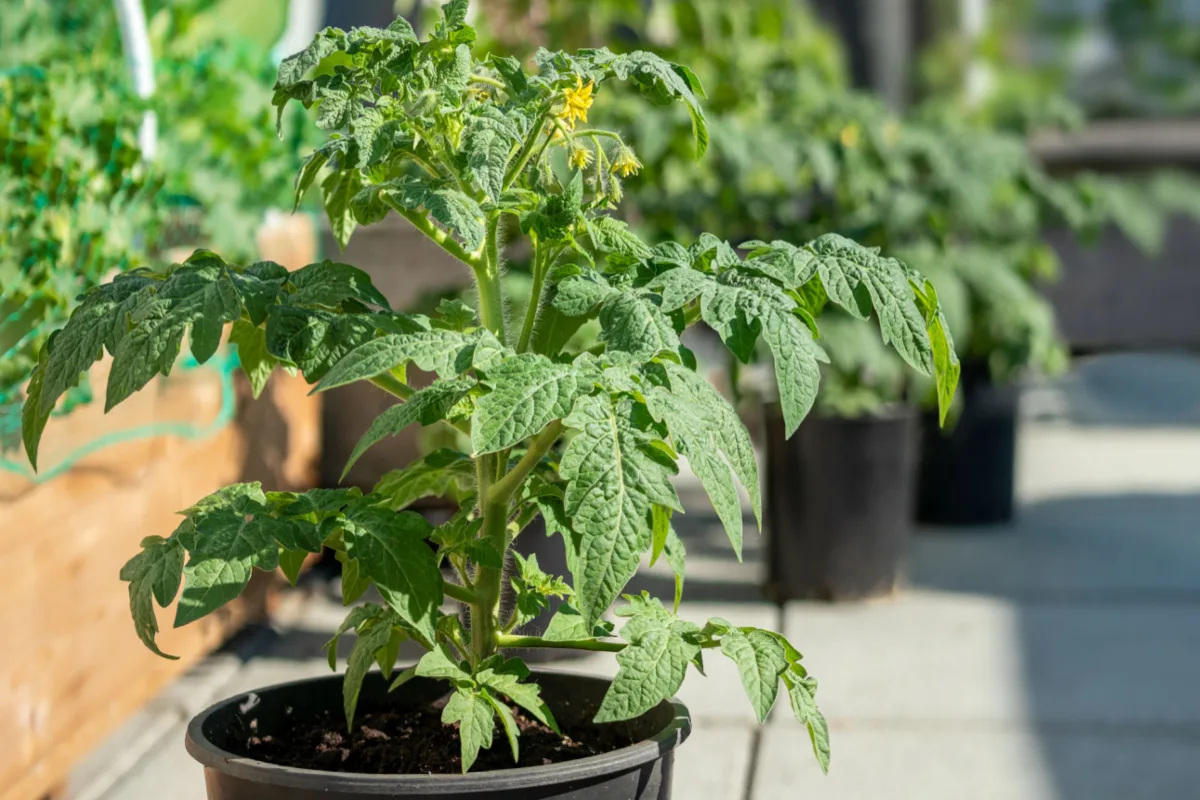
Determinate tomatoes do great in containers because of their size, which makes them the perfect patio or balcony-sized plants. Their bush-like stature means they look nice and add a bit of greenery without much upkeep. Not to mention, you’re only a few steps away from grabbing a few tomatoes for that burger you’re grilling.
7. There is Little to No Pruning
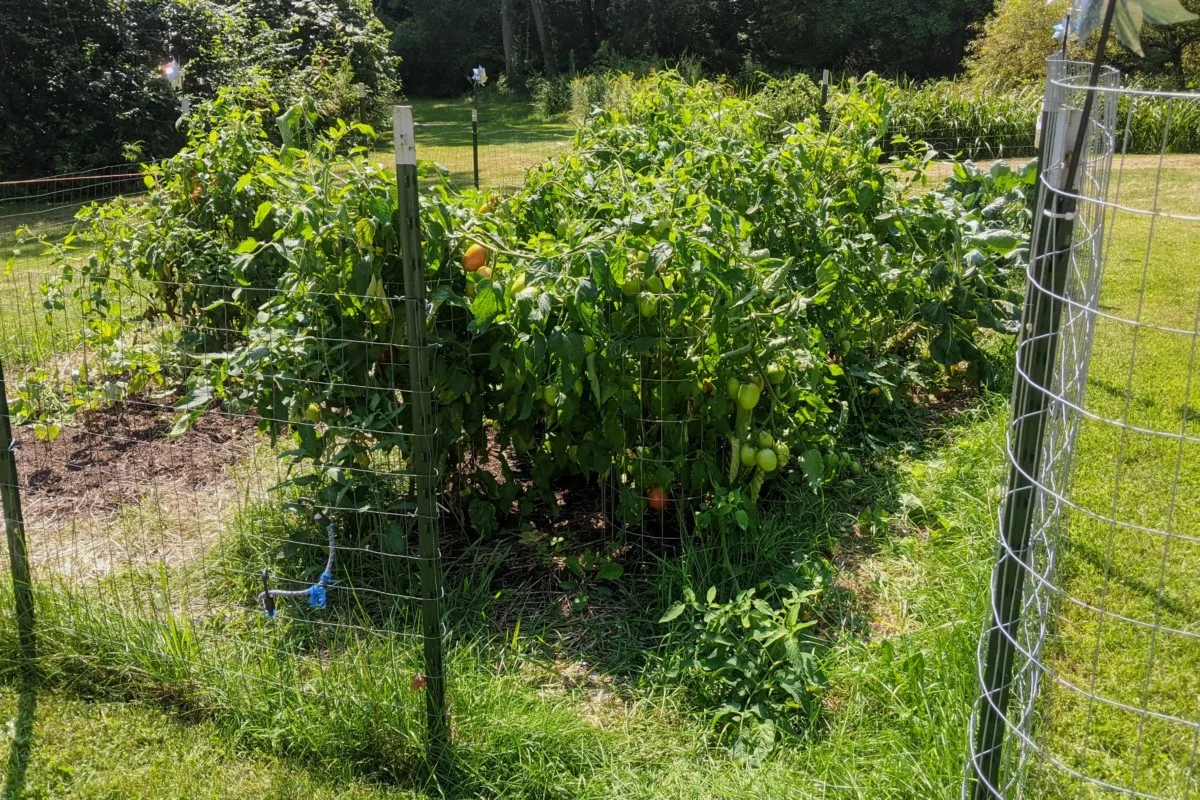
And finally, the most important reason why determinate tomatoes are better than their vining cousins is the pruning. As in, there’s little to none of it with determinate tomatoes. Remember, they have a set growth size and will stop growing once they set their fruit.
Rarely do determinate tomatoes need more than an occasional pinch-back here and there. Because they only put out one set of fruit, any pruning you do can potentially reduce their yield. Determinate tomatoes are the closest you’ll get to a set-it-and-forget-it tomato.
A Few Determinate Tomato Varieties to Grow
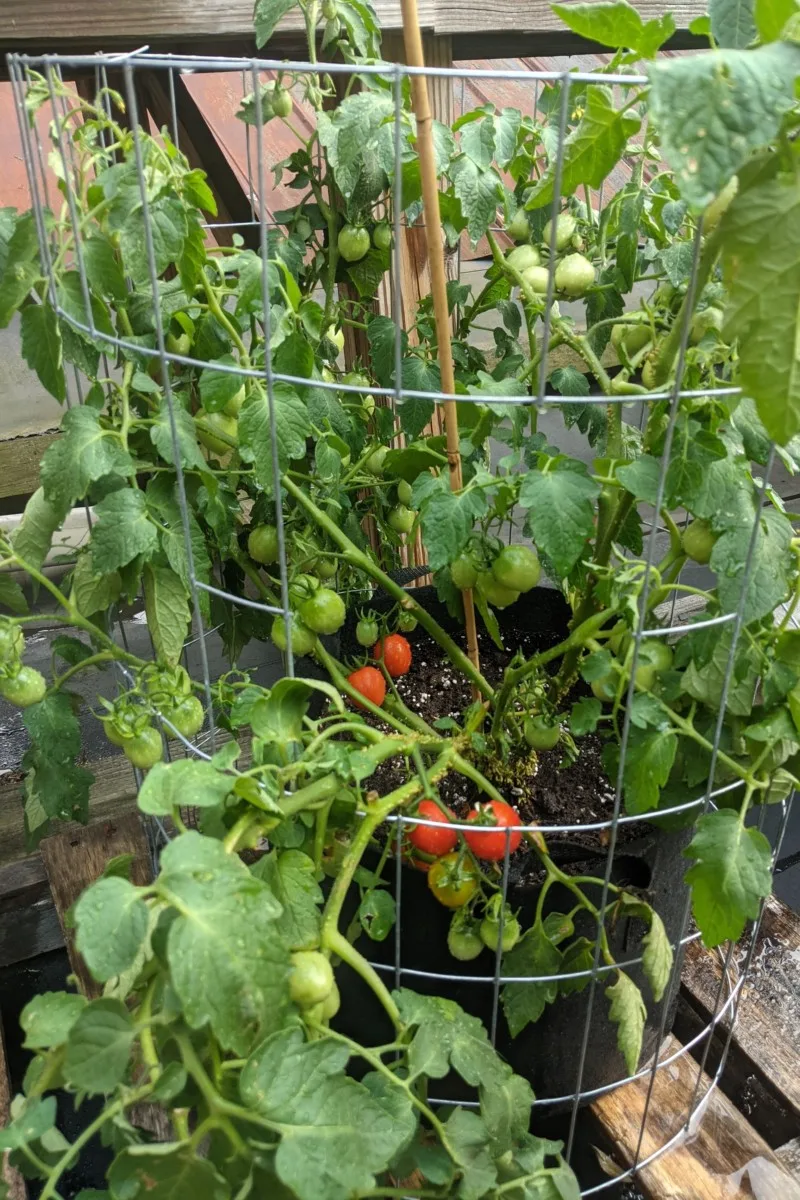
- Paisano – A lovely San Marzano type that’s just begging to be made into marinara and pizza sauce.
- Gold Nugget – Try this tasty, yellow cherry tomato that’s very compact and produces a prolific set of early fruit.
- Tasmanian Chocolate – This tomato with heirloom parents was bred to be compact with highly flavorful fruit perfect for slicing.
- Early Girl Hybrid – This hybrid tomato was also bred to be extremely compact, topping out at 18”. The plant requires little to no support yet still produces decent-sized 4” fruit.
- Roma Grande – A traditional paste tomato loaded with flavor that will give you plenty of fruit to can with.
- BushSteak Hybrid – If beefsteak tomatoes are your thing, you’ll want to try this compact variety.
- Principe Borghese – This is the world-famous sun-dried tomato, and I grow it yearly.
- Prairie Fire — A tomato as sweet as it is lovely. If you like your tomatoes on the sweeter side, this one is for you.
- Rutgers Tomato – If you need a tomato that can do it all – canning or freshly sliced, the Rutger is the one.
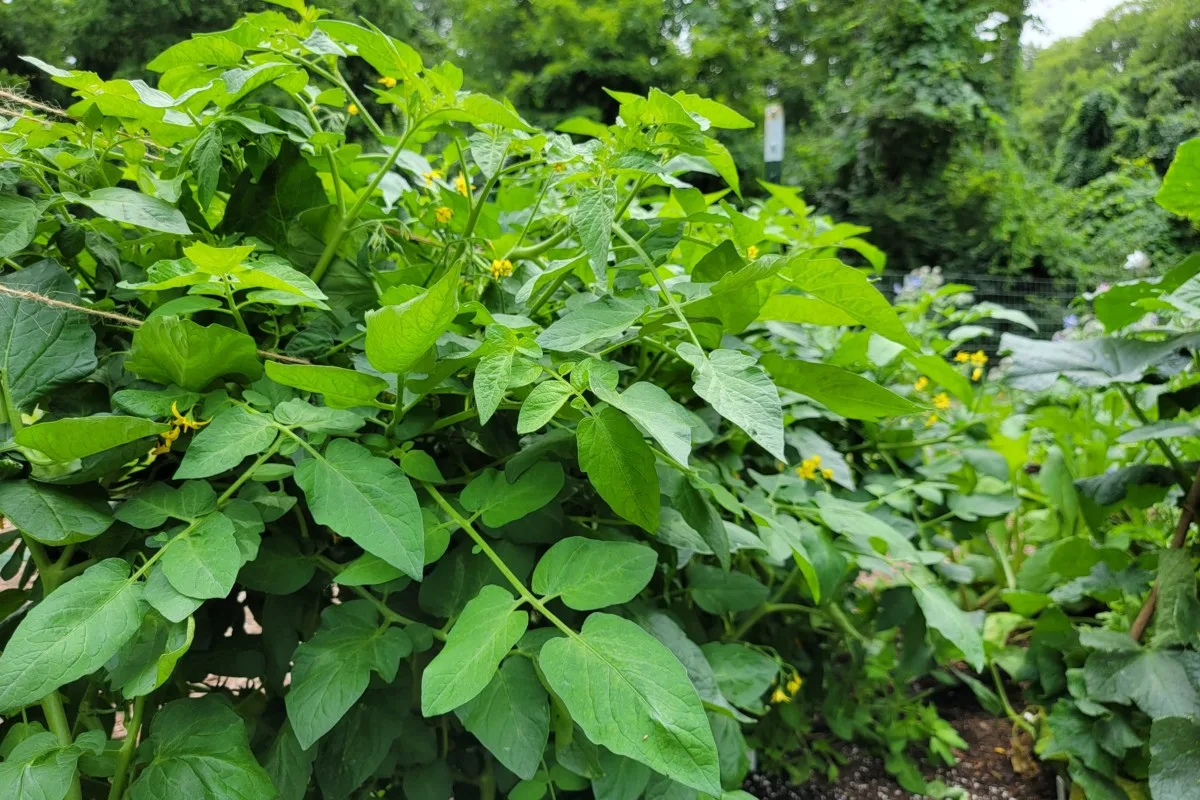
So, now I’ve shown you all the reasons why determinate tomatoes are the superior class of tomatoes. Unfortunately, in the time it’s taken me to write this, my indeterminate tomatoes have taken over the garden path, and I haven’t seen my sweetie all afternoon. Perhaps I should grab the pruning shears and look for him.

Get the famous Rural Sprout newsletter delivered to your inbox.
Including Sunday musings from our editor, Tracey, as well as “What’s Up Wednesday” our roundup of what’s in season and new article updates and alerts.

